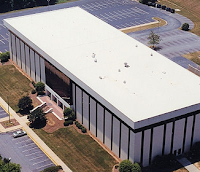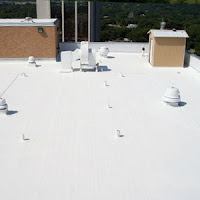Cool roofs are a “hot” topic these days as a means to help stem global warming. Most of us know better than to wear black on a hot day, but when it comes to the roofs on our buildings, temperature often takes a back seat to aesthetics. Dark roofs mean higher air conditioning bills, and higher carbon dioxide emissions as a result. The good news is you can save money while protecting the planet by lightening the color (and therefore lowering the temperature) of your roof, or by switching to a white roof the next time your building requires it.
The Benefits of a White Roof
Switching to a white roof can actually reduce energy use by about 20% in hot, sunny weather, according to the Lawrence Berkeley National Laboratory Heat Island Group in Berkeley, Calif. Hashem Akbari, the Heat Island Group’s lead scientist and a professor of Building, Civil and Environmental Engineering at Concordia University in Montreal, says that transitioning to reflective roofing and pavements in the world’s urban areas would offset the equivalent of emissions from the planet’s 600 million cars for the next 18 years. A 1,000-square-foot cool roof saves air conditioning use that otherwise would emit about half a ton of carbon dioxide per year.
In urban areas, white roofs also help lower smog levels by lowering local temperatures, which tend to be higher due to the large proportion of paved surfaces.
Critics have suggested white roofs do more harm than good in colder climates. But research shows that the heating benefits of a dark roof in the winter are negligible because days are shorter, skies are cloudier, the angle of the sun is low, and sometimes roofs are covered in snow. “The amount of heat savings you may lose in the winter would be, at the maximum, 30% of the summertime savings,” Akbari says. “If you need cooling in the summer and heating in the winter, no matter where you are, a white roof will most likely save you money.”
Find a Contractor here
ROOFING CONTRACTORS NEEDED IN MULTIPLE STATES!
Patton Services | (309) 303-3128 | rpatton55@comcast.net | http://www.whiteroofingsystems.com





